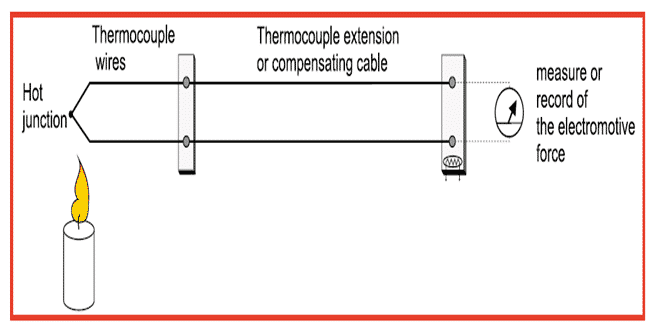The thermocouple compensation cable is the bridge between the thermocouple and the transmitter transmitting the temperature signal. We will discuss thermocouple compensation cable in this article.

Why Compensating Cable?
In process plants it is not practical to have a cold junction at the end of the thermocouple. Therefore, it is desirable to extend the thermocouple cold junction to a reference point, some considerable distance away. We can achieve this by the use of a thermocouple compensating cable
Usually, thermocouple cables are short in length, and it is not possible to extend the thermocouple cable up to a far distant point because thermocouple cables are costlier. The measurement accuracy is better when there is less distance between the thermocouple and the transmitter. If the transmitter has its installation near the cold junction of the thermocouple, measurement accuracy is better. However, it is impractical to install a temperature transmitter at the cold junction of the thermocouple.
For example. a thermocouple’s cable length is one meter and the transmitter installation point is 50 meters from the cold junction point of the thermocouple. There are two ways to wire the transmitter and the thermocouple when the transmitter’s distance is far away from the thermocouple.
- Connecting thermocouple and transmitter with the same type of cable as the thermocouple cable. This type of cable is called thermocouple cable. The thermocouple cable is very costly in comparison to other types of cables.
- The second method is the use of a thermocouple compensation cable. The thermocouple cable material is different than the thermocouple cable material. The thermocouple compensation cables are cheaper than the thermocouple cable. And, the measurement accuracy achieved with the use of compensating cable is almost the same as with the use of thermocouple cable.
Materials of Thermocouple Compensation Cable
The thermocouple compensating cable has different metallurgy but has the same properties as that of the thermocouple cable. Thermocouple compensating cables have similar temperature and EMF relationships. In other words, we can say the electrical properties of the compensation cable are almost similar to thermocouple cable.
But, before selecting a thermocouple compensation cable, its temperature range must match the requirements for a certain application. This is the limitation of the thermocouple compensating cable, and hence they are suitable for medium temperatures and not for too high or too low temperatures. The compensation cables are suitable for the temperature range from ambient temperature to 90 degree centigrade. Thermocouple compensating cables are much cheaper, and hence they have their wide application for moderate temperatures.
The operating temperature of the compensation cable is almost equal to the operating range of PVC. Therefore, the PVC is the insulation material used for covering the thermocouple compensation cable.
Summary: Thermocouple compensation cable features
- The thermocouple compensation cable has PVC insulation and sheath. This provides excellent resistance against moisture, abrasion and flame
- The thermocouple compensation cable have a certain number of twisted compensation wire pairs, and then covered with shielding layer, sheath, armor layer.
- The compensation line pairs are all in the form of twisted pair. The types of shielding layers are wire braided shield, aluminum-plastic composite tape , and copper-plastic composite tape.
- Compensating cable connects the thermocouples and measuring devices in order to compensate for errors in the temperature changes at their junction with the thermocouple.
Read Next: